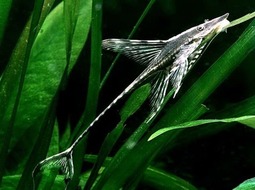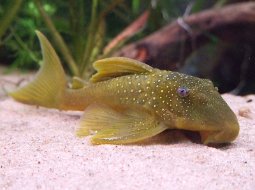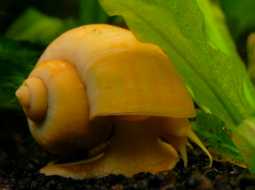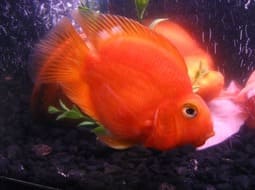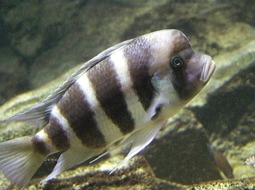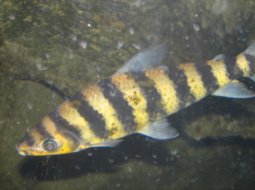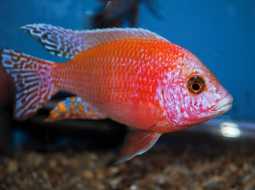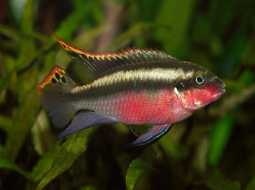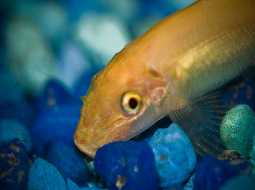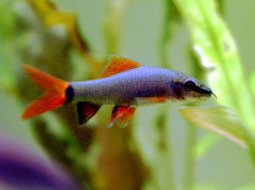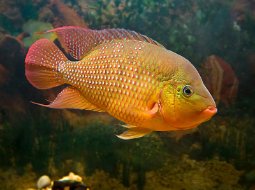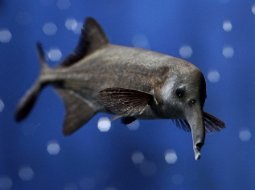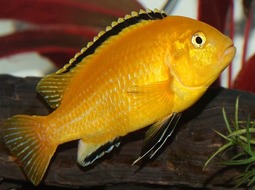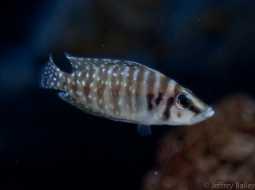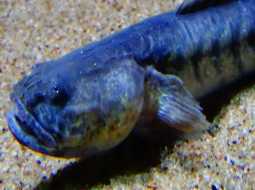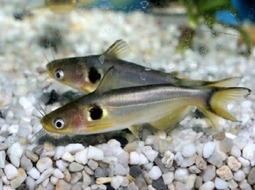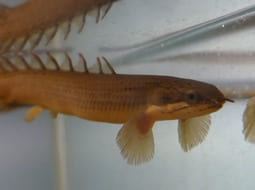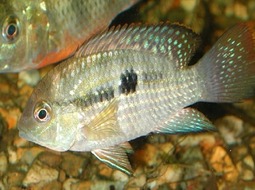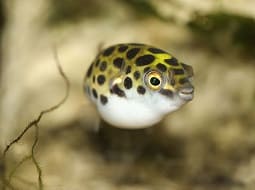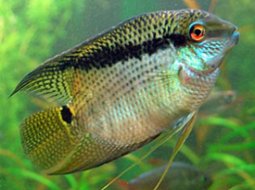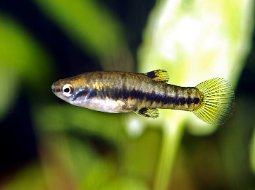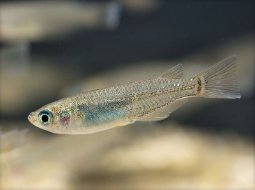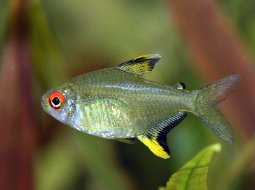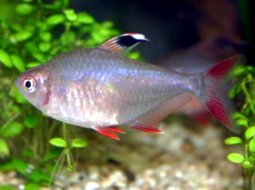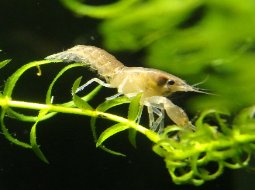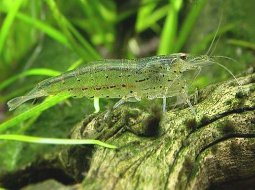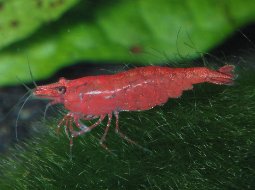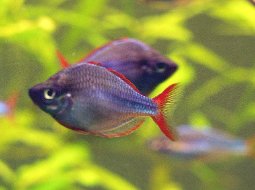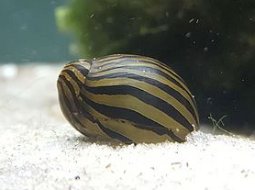
Loading Aqualapp ...
Care and Compatibility of Commando Cichlid - Nimbochromis venustus
Introduction
The Commando Cichlid has an elongated and laterally compressed body, with a large head and prominent mouth. Its coloration is impressive, ranging from light blue to bright yellow. Males are usually larger and more colorful than females.
Behavior
The Commando Cichlid, also known as Nimbochromis venustus, is a species native to Lake Malawi in Africa. It is known for its striking appearance and interesting behavior. They are territorial and aggressive fish, especially during the breeding season. They require a spacious aquarium with hiding places and rocky areas to explore.
Sexual Dimorphism
Sexual dimorphism in Nimbochromis venustus is evident. Males are typically larger and have more vibrant colors, especially during breeding season, while females tend to be smaller and less colorful.
Reproduction
Breeding Commando Cichlids can be challenging. They are maternal mouthbrooders, which means the female will pick up the fertilized eggs in her mouth and protect them until they hatch. After hatching, the fry will stay in the mother's mouth for some time before being released. Providing suitable spawning sites in the aquarium is recommended to facilitate this process.
Aquarium Conditions
Nimbochromis venustus, commonly known as the venustus cichlid, requires a spacious aquarium with rocks to create structures and caves. It prefers alkaline water and a warm temperature. Aquarium décor should include large rocks and sand substrate. Maintaining water quality is crucial and providing a balanced diet.
Feeding
They are carnivorous fish and primarily feed on small fish and crustaceans in their natural habitat. In the aquarium, they can be fed with commercial foods in the form of pellets or flakes, but it is also important to include live or frozen foods in their diet to maintain their health and vitality.
Complexity
Caring for Nimbochromis venustus can be moderately challenging. They are territorial fish and can be aggressive towards other cichlids. It's recommended to keep them in a larger group or in an African cichlid tank. They are carnivores and accept a variety of foods, but prefer live and frozen foods.
In case you need more help, or if you want to know into any topic related to the Nimbochromis venustus (Commando Cichlid) and even any other species you can use the forums to ask what you need.
To do an analysis more detailed about coexistence and behavior of Nimbochromis venustus (Commando Cichlid) use the Aquarium simulation tool, if you do this you can test different ways to combine the Commando Cichlid with other fishes giving the dimensions and space on you aquarium, on this way you can known the optimal configuration for keep the fishes that you want.
You can also find out the 50 species compatible with the Nimbochromis venustus (Commando Cichlid) can live together.
Note: The parameters of the water such as PH and temperature are also used to calculate the compatibility of the species.
Compatible species (50)
Compatible (12 Species)
Compatible without any restriction
Similar Sizes (3 Species)
They can coexist if they are the same size or very similar sizes, it does not work in all cases, there may be exceptions.
With Reservation (19 Species)
Compatible in some cases, it depends on the nature and personality of the fish.
Showdown over territory (1 Species)
Fish can live together as long as the space is spacious enough to delimit a territory, otherwise there may be aggressions for competing for the territory.
Considerable size difference (15 Species)
They can coexist while they are similar in size or the size difference is not very abysmal, since as the fish grows it increases the chances of eating its partner that did not grow much.
Commando Cichlid
Nimbochromis venustus

- Ph: 7.5 - 8.5
- Temperature (c°): 23 - 28
- Measures: 20 cm - 25cm
- Aquarium Capacity:
75 Liters - 20 Gallons - Alimentación: Piscivore
- Colores: Blue, Brown, Yellow
- Comportamiento: Semi Aggressive, Territorial
- Habitad: African
- Preferencias del Acuario: Rocks
- Tamaño: Medium
- Taxonomía: Cichlids, Fish
- Tipo de Agua: Sweet water, Tropical waters
- Velocidad de nado o movimiento: Normal
- Zona de Nado: Aquarium background, Swim in the middle of the aquarium

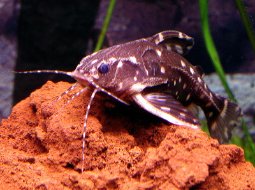
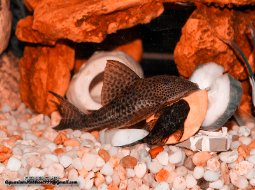
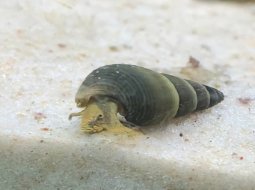

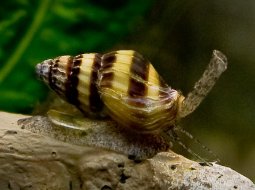
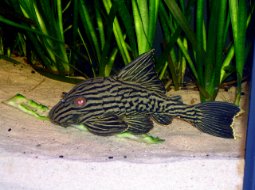

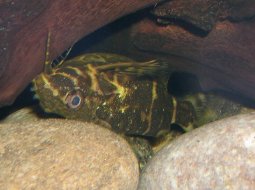
.jpg)
